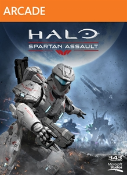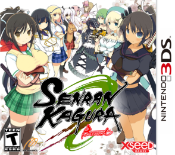The flash clone died soon thereafter.
As a huge Halo fanboy, I’m happy to take any non-Master Chief content the good brand managers at Microsoft are willing to toss out there. After getting fairly hooked on the Halo novels, and finding that the universe created to support a space marine shooter was actually pretty interesting, I’ve often pined for actual games that use this setting in completely new ways. Halo 3: ODST was a fantastic side-step and Halo Wars reportedly made a great effort at a console RTS, but the latest attempt to get Halo characters not wearing green body armor on your Xbox, Halo: Spartan Assault, smacks of an easy cash grab.
A perfectly fan-serviceable, but mindless brawler.
Despite the variety of games classified as brawlers, they typically fall into one of two camps: Those that have deep, complex mechanics and require thoughtful, strategic combat decisions and memorization of enemy tactics, and those that are simple, fun, and generally don’t require a whole lot of thought. These are games like Streets of Rage, Teenage Mutant Ninja Turtles, or Musou games like Dynasty Warriors. Senran Kagura Burst falls squarely into this second camp, but that doesn't mean it’s not a unique experience. Senran Kagura Burst is probably the most Japanese game I've ever played, and that’s really saying quite a lot.
Get ready to earn your wings.
In the early ‘90s, a new video game console was only as strong as its launch titles. When we look back at a console’s history and wonder what attracted us to it, often it’s those first games that we think of and say, "that’s why I fell in love with that system." Nintendo understood this concept when they released the Super Nintendo. Included among a shortlist of launch games was the flight simulation, Pilotwings. Beginning as an early tech demo in 1988 to show off the Mode 7 graphical capabilities of the 16-bit system, Pilotwings was developed into a full-fledged game that allowed us to take to the skies in a way never before possible on a home console.
The brightest stars burn out first.
Roughly one year ago, German developer Shin’en released the latest entry in the “Nano” series and what turned out to be the first in the Nano Assault series. Nano Assault Neo recycles some of the content from that release, but removes the Star Fox-like levels and shifts all of the focus to the pure twin-stick shooting levels. This new focus proves to be a big success, but the shortened selection of levels (16, down from 32) leaves something to be desired.
A twin stick shooter on a portable? Unpossible!
Launch titles that showcase a system’s features have become all too common. These games are typically built on a gimmick, like augmented reality, tilt, or touch. But in the case of Super Stardust Delta there are no gimmicks, just a showcase of the dual analog sticks – a first for portable gaming. Housemarque has done a fantastic job in bringing the twin-stick-shooter genre to portables with its sequel to the already phenomenal Super Stardust HD on the PlayStation 3.
These zombies ate my neighbors, so now they all need to die.
Until Lucasarts does something with their cult classic Zombies Ate My Neighbors, this is the true spiritual successor to the classic SNES/Genesis multiplayer zombie killing simulator. From the overhead perspective to the cartoony visuals and wacky weapons, this game brought warm, fuzzy memories to someone that spent hours with Zombies Ate My Neighbors. With weapon crafting, RPG stat building, and four player co-op, this is the game I would have wanted had the series continued past Ghoul Patrol.
A group of four have forged Starfire Studios to build an "always connected" XBLA game.
Starfire Studios is the latest game studio spawned from ex-Rare employees. A group of four, each with over ten years experience at Rare, have formed the new studio to create a unique XBLA title that fuses a twin-stick shooter to a variety of MMORPG concepts. Despite the split from Rare, a second party of Microsoft, Microsoft Studios is slated to publish the brand new title, Fusion: Genesis later this year.











